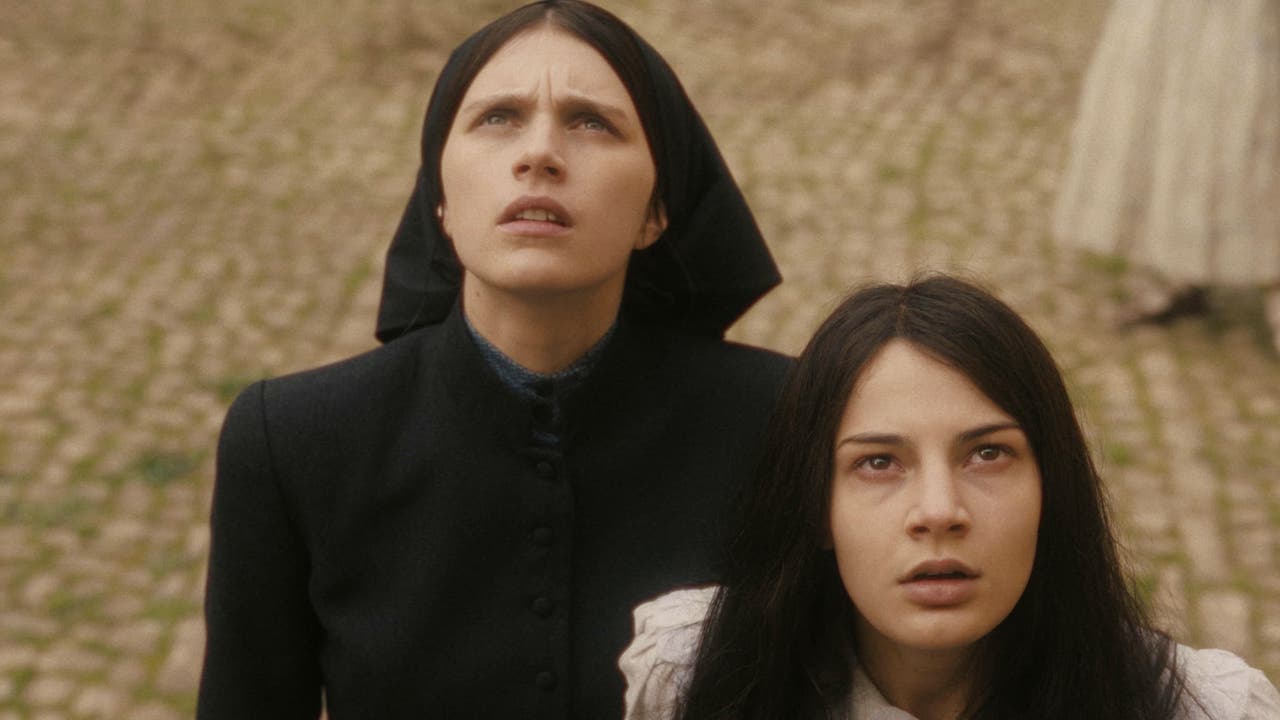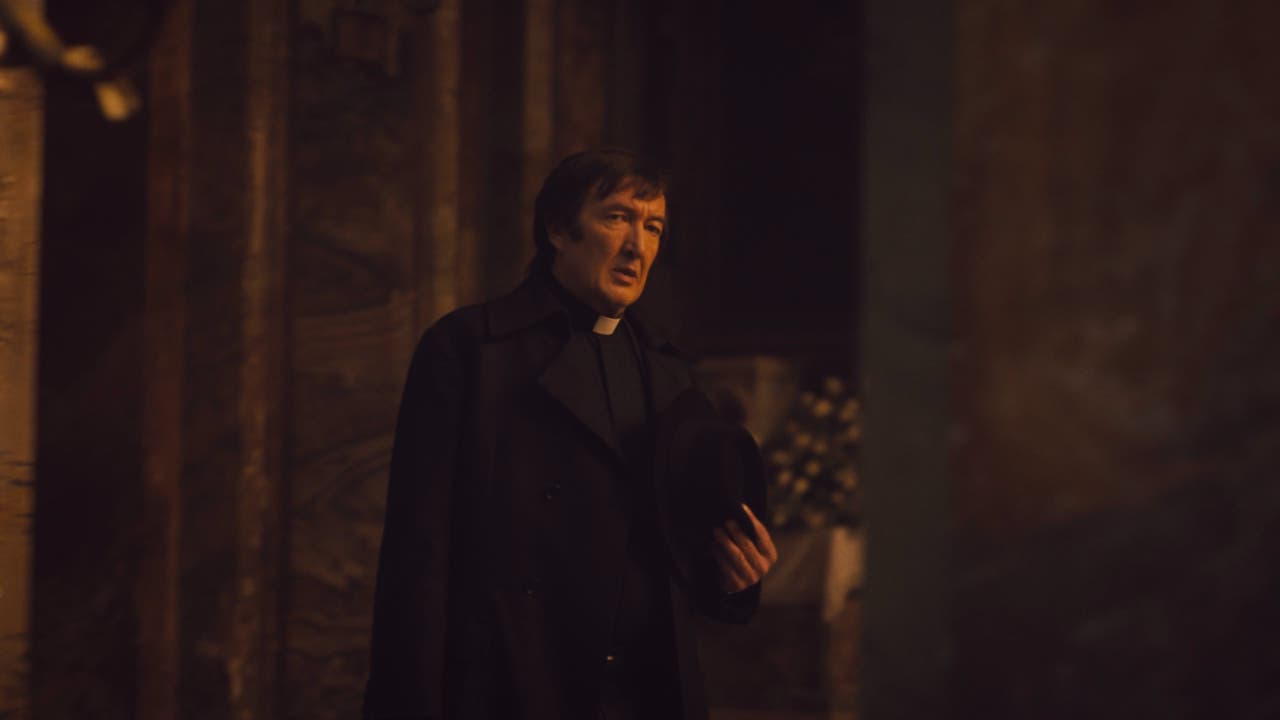The First Omen shocks in many ways — most of all, by being shockingly great

The Antichrist Damien is but a twinkle in a Catholic conspiracy’s eye, in unexpected horror prequel The First Omen. Eliza Janssen did not expect its imagery, lead performance, and gutsy ideas to take her to church quite so much.
The First Omen
Leaving my screening of The First Omen, I was shocked to check my phone and see that director Arkasha Stevenson didn’t even have a Wikipedia page yet. That’s been rightfully edited by now, as the name behind a few well-received shorts and single episodes of Legion or Brand New Cherry Flavour has turned from unlinked red to proud, underlined blue.
This genuinely scary feature debut is a good omen for Stevenson’s future career, showing her capacity to turn an unwanted prequel to a 1970s horror franchise into something breathtakingly current, disturbing, and often beautiful. With the help of fearless lead performer Nell Tiger Free, The First Omen is a nasty yet welcome surprise, reminding us of the religious horror genre’s greatest hits while introducing us to bold new talents.
A sick opening scene remixes one of the 1976 film‘s most memorable kills, establishing a winking but never deferential cinematic language: of retro zooms, warm lens flare, and baying Catholic choirs on the soundtrack, wailing as disaster descends from the sky, or rises out from the underbelly of the church’s most twisted inner workings.
We’re then plonked in sunny Rome in the midst of theology-shaking student protests, ready to meet the equally-sunny American novitiate Margaret (Tiger Free). After a rough, repressive childhood, her faith in the veil’s salvation seems unshakeable—until she begins to notice the dark corners of her new convent. A giggling, Mia Goth-type sister, caught in a breeze of madness, reminds us of Black Narcissus. A secret panel in the Mother Superior’s office is oh so Suspiria. And the religious school’s “bad girl” Carlita (Nicole Sorace), a dark-haired orphan punished with the same scare tactics Margaret was once traumatised by, just might wind up as the Antichrist’s mum.
The name “Damien” is only spoken once in The First Omen. There’s one hasty, post-climax scene of Margaret’s scheming handlers discussing the Satanic bub’s new gig with Gregory Peck. Beyond that the film appears confident enough to weave its own, separate horrors, mostly ignoring its origin story status save for the appearance of Ralph Ineson as Father Brennan (played by Doctor Who No. 2 Patrick Troughton in the original film).
The dark, seductive scares of The First Omen are at their strongest, in fact, when you forget you’re even watching an unnecessary franchise prequel. Early on Margaret is dragged to a nightclub by her saucy roommate (Maria Caballero), meaning we get a glorious, strobe-lit hit of Italodisco brilliance; we see the sweat, romance, and freedom through the eyes of our submissive main character, and we urgently want her to ditch the habit and stay in this secular, venal world, like any other young woman would. Stevenson cuts from this moment of dancefloor ecstasy to a hungover Margaret in bed, covers pulled up to her neck so she looks decapitated: her hair sprawled artfully on the pillow, like menacing tentacles around her cursed head.
Through image alone, we now know there’s no escape for her, long before she gleans the full scale of her organisation’s unholy plan. This movie’s got moves: fun, visually stunning ideas that push tired religious iconography into fresh directions.

One scene in particular shows the guts—almost literally—of this unexpectedly exciting production. The film received a prohibitive NC-17 rating in the US for a full-frontal childbirth scene. Forget Satanic themes and violent kills: won’t somebody please think of the wee innocent teens sneaking into this gruesome horror film, who may have to watch a representation of how they themselves came into the world??!! Producer David S Goyer spoke to the irony of this censorship, for a film explicitly about the violence perpetrated by misogynistic systems of authority: “The movie, by its nature, deals with female body horror, and I do think there’s a double standard…I think there is more permissiveness when dealing with male protagonists, particularly in body horror.”
The First Omen puts its money where its mouth is in discussing such weighty, unfortunately topical concepts. It would’ve been cowardly anyways for post-Roe V. Wade Hollywood to make a movie about young women forced into childbirth without acknowledging the dehumanising truth of that experience, whether the unborn child is the Devil incarnate or not.
Still, it’s not a perfect film. That title causes confusion when you’re comparing The First Omen to, uh, the first Omen (1976). There’s a reveal here that won’t land as a twist to any even remotely attentive viewers. Tiger Free’s impressive lead performance so dominates the screen that growly-voiced Ineson, Sorace, Caballero, and the convent’s conniving nuns aren’t allowed to make much impact on the sidelines of the story. While Stevenson impeccably reflects influences of Satanic, gynocentric horror classics such as Rosemary’s Baby throughout the film, those homages can also feel too direct at times. A scene of Margaret vibrating and vomiting à la Possession is terrifically shot and performed…but there’s only one Isabella Adjani.

Another, unintentional comparison that won’t escape cinema-goers is the very similar Immaculate, which is also currently in theatres and also got a surprised thumbs-up from our critic Steve Newall a few weeks back. I could copy-paste-find-replace plenty of Steve’s praise for that film to explain why The First Omen works so well, too: “Pleasantly, Immaculate is no period pastiche or mere grab-bag of references—in both journey and destination, the horror offers plenty of gore, surprises, and gonzo plotting, wrapped up in a classical (yet not throwback) aesthetic.”
I offer that we shouldn’t pit these two movies about an American nun finding out freaky pregnancy conspiracies in an Italian convent against one another. Both can be shockingly good! I will say this, though: only one movie deploys Bill Nighy’s avuncular charms as a weapon of insidious terror. And it ain’t the Sydney Sweeney one.



















